
|

|
Forum Index : Electronics : 35 mm2 cables on to Midnite Classic
| Author | Message | ||||
| brac321 Regular Member Joined: 30/11/2016 Location: SloveniaPosts: 54 |
When I got my 1st Midnite Classic controller I was quite surprised how thin wires they use for PV and batteries - max. #4 AWG (21 mm2)... They claim it is ok even for 100A of current. Are they serious? We run PV for decades and I know quite well that permanent 60A for longer time on a 35 mm2 will made cable a bit hot. So I was not willing to step down from my existing cable diameter. Searching on the Internet gave me no usefull informations about. Most of factory made cable lugs were too thick and too long. So I designed my own copper reducing link. I used 12 mm copper rod that was at home, trimmed down to 10 mm. Now on one side drilled 14 mm long hole, up to 7.5 mm wide and widening its entry hole to 9+ mm. This will ease copper cable entry. Piece was now cut off on a metalworking band saw and put back in to lathe machine in the opposite direction. The front part was shaped as required for Midnite Classic (see sketch below). The last task was to drill a 2.5 mm wide hole on the side of the link (~10 mm from bottom up). Its purpose is to easy soldering of cable inside that reducing link. After, all four links were chemically cleaned and are ready for soldering. In the large hole we put a little of Flux paste and then with a help of hot air soldering machine set to 480 ║C begin to heat all together (35 mm2 cable is already inserted in link). It takes some time to heat up, after it will begin to suck 1.5 mm tin that we feed trough 2.5 mm hole in length about 8-10 cm. Finally after cleaning and cooling down we need to protect outside conducting part of a link. The easiest way would be using 2 layers of thermal shrinking tubes, one by one. There will be enough free space to put some Teflon or similar insulation leaflets between each pair of cables for those who would doubt on thermal tubes ... OffGrid 24/7: 250w black mono solar panels 6.4kWp, 1x Midnite Classic 150, 1x MorningStar MPPT 60, battery bank 840 Ah @ 48v, modified LF-8K inverter, DC/DC, hot water harvesting, etc. |
||||
| brac321 Regular Member Joined: 30/11/2016 Location: SloveniaPosts: 54 |
Sketches ... 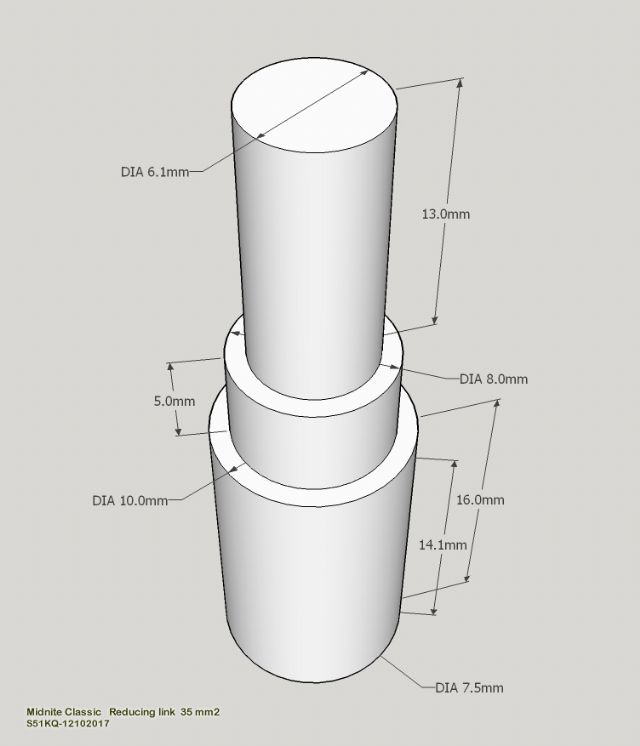 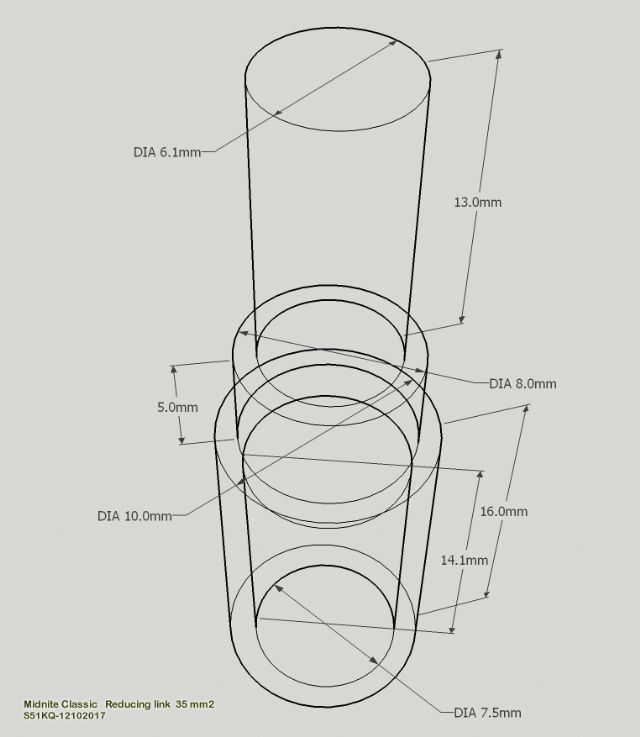 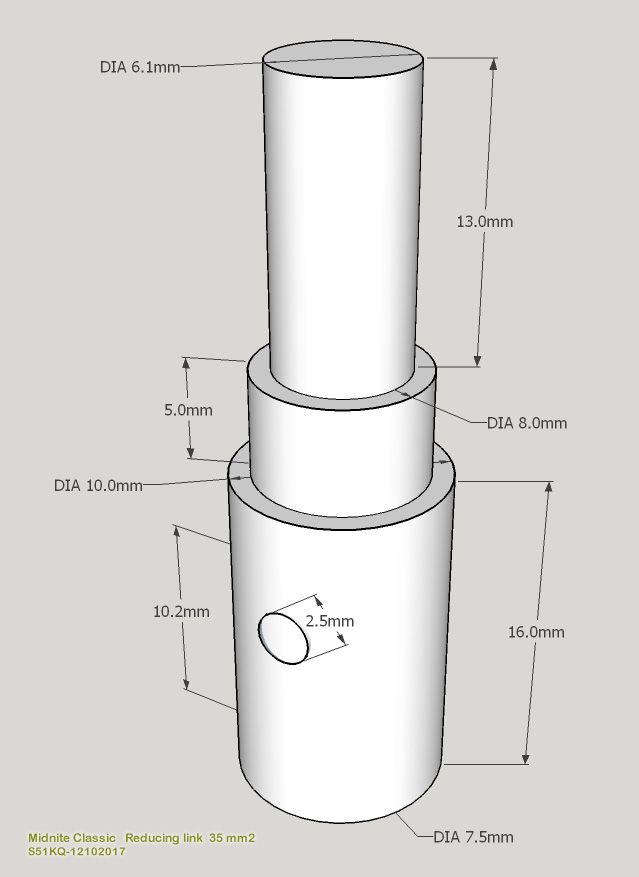 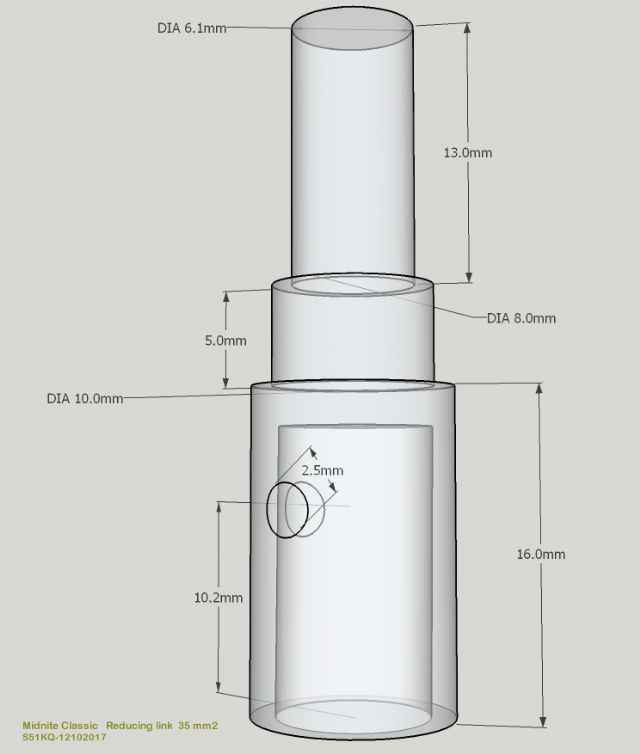 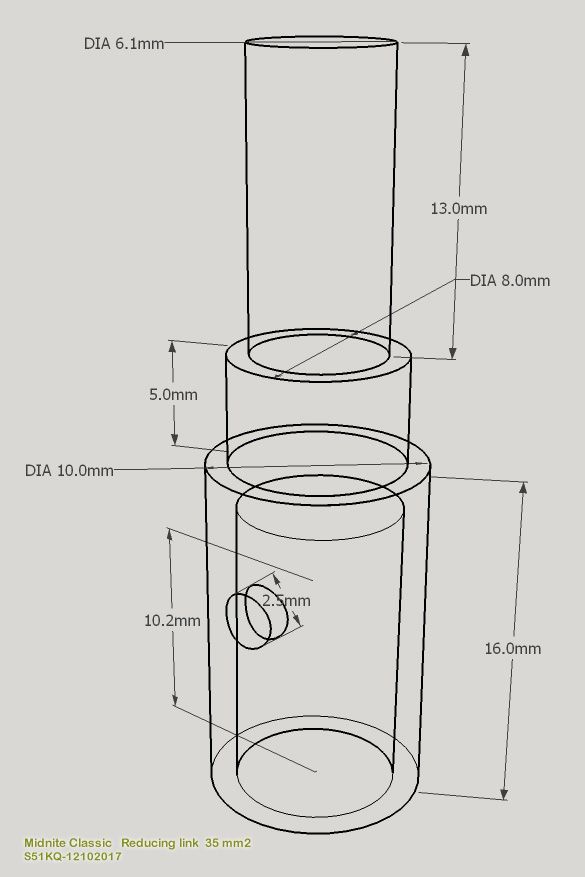 OffGrid 24/7: 250w black mono solar panels 6.4kWp, 1x Midnite Classic 150, 1x MorningStar MPPT 60, battery bank 840 Ah @ 48v, modified LF-8K inverter, DC/DC, hot water harvesting, etc. |
||||
Madness Guru Joined: 08/10/2011 Location: AustraliaPosts: 2498 |
It is odd they did that, I calculate if you have a 5m run of wire you are going to lose 160W. There are only 10 types of people in the world: those who understand binary, and those who don't. |
||||
| yahoo2 Guru Joined: 05/04/2011 Location: AustraliaPosts: 1166 |
looks a lot neater than my trimmed down bootlace crimps. That stretch from the combiner box to the controller is certainly the bit of wiring that worries me the most when I look at a building. I'm confused, no wait... maybe I'm not... |
||||
| Boppa Guru Joined: 08/11/2016 Location: AustraliaPosts: 814 |
Very professional looking- and a much better solution than many I have seen that wanted the 'proper' sized cable but couldnt fit it in the terminal- so just keep cutting strands off flush with the insulation until it just fits into the terminal! (looks so bodgy brothers when they do that- yours looks like something that was purpose made for the job- well it is, but you know what I mean- store bought professional)  |
||||
| brac321 Regular Member Joined: 30/11/2016 Location: SloveniaPosts: 54 |
If they were smart... they don't need to change Classics PCB for appropriate cables. What is needed at the phase of Classics production is to put simple oval terminals - just few mm higher opening on each will gave enough space to fit 35 mm2, maybe even 50 mm2 wire in. But there at 50 mm2 we could face another problem - wire insulation is too thick for such narrow terminal spacing. Much better is done on Morningstar Tristar controllers, but they face other severe problems and can be blown so easy  OffGrid 24/7: 250w black mono solar panels 6.4kWp, 1x Midnite Classic 150, 1x MorningStar MPPT 60, battery bank 840 Ah @ 48v, modified LF-8K inverter, DC/DC, hot water harvesting, etc. |
||||
| brac321 Regular Member Joined: 30/11/2016 Location: SloveniaPosts: 54 |
Installed ... OffGrid 24/7: 250w black mono solar panels 6.4kWp, 1x Midnite Classic 150, 1x MorningStar MPPT 60, battery bank 840 Ah @ 48v, modified LF-8K inverter, DC/DC, hot water harvesting, etc. |
||||
Madness Guru Joined: 08/10/2011 Location: AustraliaPosts: 2498 |
Very professional looking installation, I used to have Morningstar and Midnite controllers but decided it was better to sell the MS and replace it with a Midnite. Follow me works so well with them, however I am planning to replace them with my own DIY controller very soon. There are only 10 types of people in the world: those who understand binary, and those who don't. |
||||
| brac321 Regular Member Joined: 30/11/2016 Location: SloveniaPosts: 54 |
Madness, I had installed many Morningstar MPPT controllers in past, 3 of them at my home, two were in operation 24/7 and the 3rd one was there as a spare. Unfortunately, after few years using them they were all blown within few months this year while switching it On. There is something very strange with their firmware and hardware. When I need to switch them off/on I was always very careful to cut off PV source 1st, wait and only after apply battery voltage to them, but they blown randomly without an understandable reason, even at the night time. Always blown the same two power N-Fets (IRFB4321), plus driving BGA-like type DirectFets on the Battery side of the switching bridge. Replacing these drivers (IRF6619) was very, very! painful. I guess no one would like to repair these boards ... Finally I manage to desolder them without damaging PCB too much and without desoldering tiny SMD parts near by and on the opposite side of the PCB. Now the original replacement ones came without solder layer on them (10 pieces, grrrrr ...), so were not usable to me  Instead I selected one of the HexFets in TO252 package, rewired them on the Morningstar board, and very expensive MPPT controllers were operational again. Not at first shot, because the fault also mishandled CPU flash memory on some of them. After uploading all parameters on a new, they are all a live now, like nothing happened before. Instead I selected one of the HexFets in TO252 package, rewired them on the Morningstar board, and very expensive MPPT controllers were operational again. Not at first shot, because the fault also mishandled CPU flash memory on some of them. After uploading all parameters on a new, they are all a live now, like nothing happened before.  After these three "crashes" I got to conclusion: there is not properly designed hardware and bad software in those Morningstar ctrls. Why they didn't put mechanical relay on the PV input!? why they did not installed power_On delay for the Battery connection!? And if you try to set specific registers on them during charging, they will be blown immediately, too. There is known issue with their PV input. If PV input is a live, do not put them on battery voltage, otherwise there is high chance they will be immediately dead. But this was not my case. Situation here was without PV connection they were powered On only 5 to 10 seconds after switching them Off. CPU was not initialized yet, and the output Fets were in short because of DC charge still in the large capacitors around them... I don't know if there will be 2, 3 or 5 minutes of delay enough to safely switch them On again. What I found out and really work for me and safe is: at Off state shorten their battery connection for a while (and measure if there is any voltage left inside) to empty those capacitors. That way I was not able to destroy them again, regardless how many times I try.  I had enough of their unreliability, so gave a try to Midnite Classic one now. OffGrid 24/7: 250w black mono solar panels 6.4kWp, 1x Midnite Classic 150, 1x MorningStar MPPT 60, battery bank 840 Ah @ 48v, modified LF-8K inverter, DC/DC, hot water harvesting, etc. |
||||
| yahoo2 Guru Joined: 05/04/2011 Location: AustraliaPosts: 1166 |
Hi Brac, there was also a known issue with using their PC software to program the tristar units. Same result, blew up as we rebooted if we ticked the wrong box. it really annoyed me that they never locked out those function combinations in the software when a TS-mppt was hooked up. I complained to them for 5 years about it and got nowhere. I think sometimes we overestimate the level of talent that is left at some of these companies after the initial design faze is over. I get the feeling a lot of this stuff is not designed in house, its all done through third party contracts. I'm confused, no wait... maybe I'm not... |
||||
| Warpspeed Guru Joined: 09/08/2007 Location: AustraliaPosts: 4406 |
Its also fairly common for the original design engineer of either the hardware or software side of things, to leave the company at some stage. Whoever replaces them, often has no idea of the original design philosophy, or in some cases how it is even supposed to work. Management often just do not care. Oh we know it does not work, but if we admit there is a problem, all our customers will demand we fix it. So we will just go on making them the same way, and deny there are any problems. That attitude is what often drives talented people with a strong work ethic out of these types of companies. Australians are historically pretty inventive people, but what gets off to a very promising start is often poisoned by mindless greed and corruption at management level. Cheers, áTony. |
||||
| brac321 Regular Member Joined: 30/11/2016 Location: SloveniaPosts: 54 |
Yes, and they sell those "half born babies" for big money to us ...  I also wrote them (Morningstar) few times regarding some issues with their controllers, and was left without useful feedback. In the mean time I began writing (building up) software that will collect some live data from charging controller, from inverters, from Grid line, heat pump, Sonoff devices, etc. to a tiny, single PCB called web server. Few sections are already operational and accessible trough LAN and also Internet. That's of some importance because I drive a lot around - out of home to a distant places, to other countries around (climber, mountain guide and kayak-er). So, preliminary web display of some LF Inverter AC data looks like 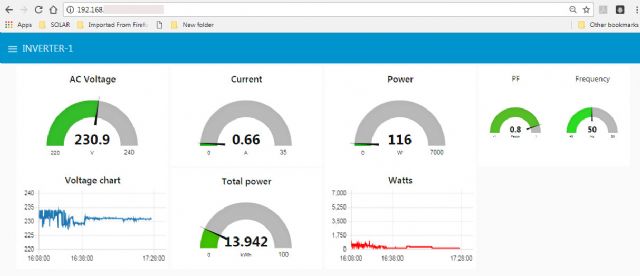 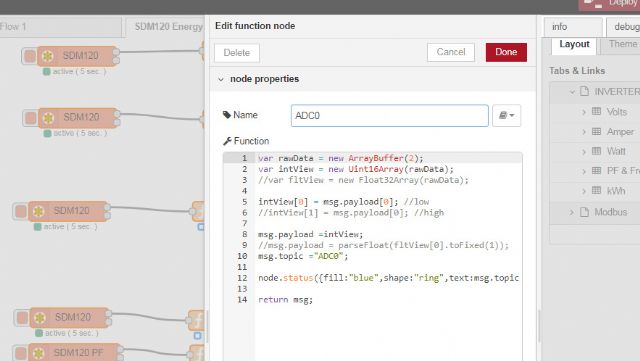 In "raw" text mode as shown on GSM This Sunday morning I got 1st valid data out of the Classic ctrl, regardless plenty of clouds that we have these days on the sky  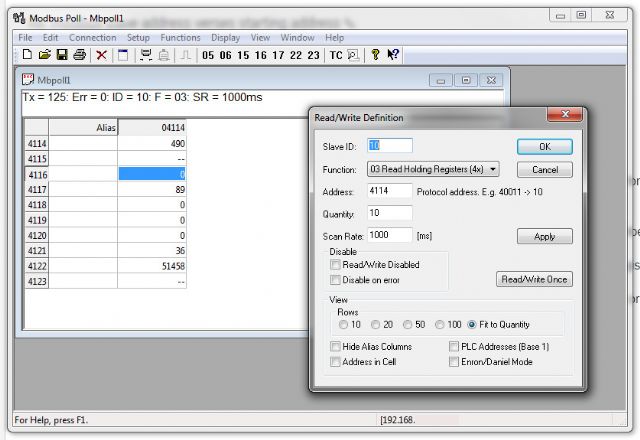  And the user outlook on web page 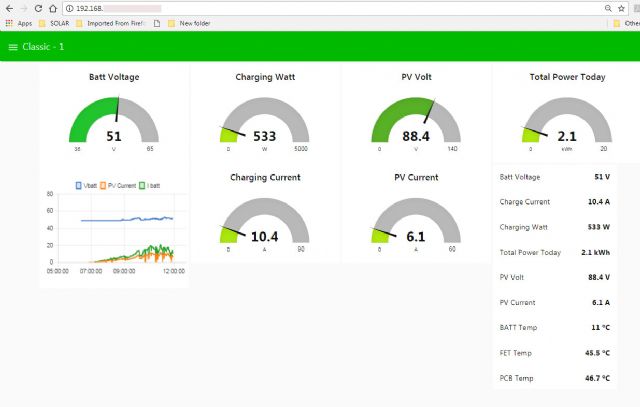 On the big chart (current & power) that I made for test and was analysed is clearly seen kind of deep drop outs on Classic ctrl, probably during change of its MPPT stages. These drop-outs are frequently on a few minutes basis, all the time in Bulk MPPT mode. That's completely strange to me, sorry, but WTF is going there in Midnite ctrl ...!? OffGrid 24/7: 250w black mono solar panels 6.4kWp, 1x Midnite Classic 150, 1x MorningStar MPPT 60, battery bank 840 Ah @ 48v, modified LF-8K inverter, DC/DC, hot water harvesting, etc. |
||||
| brac321 Regular Member Joined: 30/11/2016 Location: SloveniaPosts: 54 |
See all these straight vertical lines ... Have sampled (collected) data out of Classic on a 3s basis. There is something quite strange in their charging software. Green line is output current, Orange one is PV input current. Looks like at event of MPPT stage change, Classic 150 completely drops charging out. 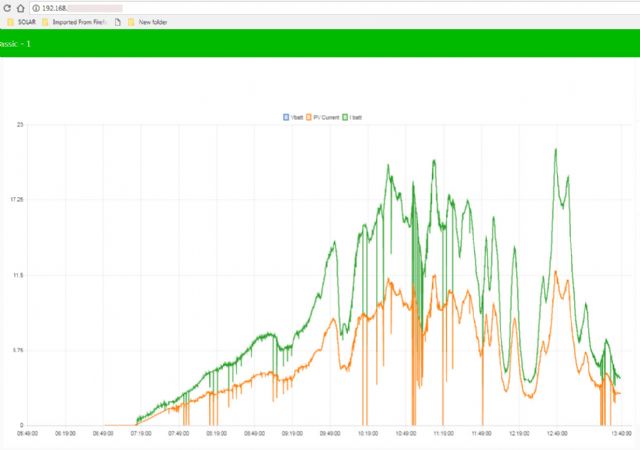 OffGrid 24/7: 250w black mono solar panels 6.4kWp, 1x Midnite Classic 150, 1x MorningStar MPPT 60, battery bank 840 Ah @ 48v, modified LF-8K inverter, DC/DC, hot water harvesting, etc. |
||||
Madness Guru Joined: 08/10/2011 Location: AustraliaPosts: 2498 |
I have seen the dame many times on my 2 Midnites, you can see it if you are using the classic monitoring app on your phone as you have shown previously. Your monitoring software looks very nice is that something you plan to share? There are only 10 types of people in the world: those who understand binary, and those who don't. |
||||
| brac321 Regular Member Joined: 30/11/2016 Location: SloveniaPosts: 54 |
Madness, at the moment I just playing with data and the software - all is in development stage. It is operational yes, but fare a way to be finalized. If there is some interest in this project? it will be probably better to open new Topic dedicated to, because of its size ... Yesterday have added RS485 communication with 3 energy meters: for main LF Inverter (as you already saw in previous posts), one on the Grid line, and 3rd one on Heat pump. In winter time heat pump is our largest consumer  For their operation monitoring and remote adjustments we use original Siemens web server, unfortunately there is nothing about its energy consumption, therefore I added 3rd energy meter directly on to H.P. power line. Hot water collectors (harvesting) have also their own web server (Resol), its power consumption is so tiny that do not bother me at all. For their operation monitoring and remote adjustments we use original Siemens web server, unfortunately there is nothing about its energy consumption, therefore I added 3rd energy meter directly on to H.P. power line. Hot water collectors (harvesting) have also their own web server (Resol), its power consumption is so tiny that do not bother me at all.Software on my "tiny" web server at this moment supports Midnite Classics and these energy meters. There is no comm. error checking built at this stage - if communication with one of devices is lost, there is no error report. All IP's and RS485 ports are fixed inside software, no user adjustments yet. I will also like to add some soft switches - relays and input readings directly on to servers I/O port for remote control. There is currently missing support for Sonoff devices that we use plenty in our home. One need to replace original small flash memory IC with larger one and flash it on a new with 3rd party firmware to get rid of official internet Chinese server they use. After, need to add/write software support on its own for local web server. So, still plenty work to do... These are the energy meters I using. They are available with various functionality and sizes up to 3f. I've chosen the smallest single phase ones, but with directional external current sensing coil. They goes up to 100A @ 240v, there are 25 and 50A versions too. With similar meters using an internal shunt, I had bad experiences in past. For the communication with them these USB-RS485 converters were used. Not all of them will be ok (depends on what IC is inside), but these one operates error free. Midnite Classic(s) communicate with web server directly via LAN cable (TCP), and the protocol conversion is done by the software in server. The same situation will be with Sonoff devices (Sonoff 4ch PRO, Sonoff POW, etc), only there one need to use WLAN way. I do not use large, power hungry PC for this. For the heart of the system I've chosen a tiny - credit card sized, but powerful stand alone micro computer Raspberry PI3 model B. It is the latest version, low power with a 1.2 GHz 4 core CPU, LAN, WLAN, Bluetooth, 4 USB ports, HDMI & DTI display ports, SD port, etc. It powers from a 5v DC source. I've used an powerful DC-DC hybrid step-down module (48v to 5v) mounted on a heat sink, that supplies also other web servers from PV battery bank. Raspberry Pi have all what one needs to make a project like this. It runs on Linux, monitor, mouse and keyboard can be directly connected on. It is quite nice mini standalone computer. DC-DC converter supply used For the basic project like mines you would need: Raspberry PI3 B or B+, USB-RS485 converter (for energy meters and other ModBus devices like Morningstar), plus all the software. In current project I've used base Linux OS plus Node-Red with some additional libraries. Software was built modular way in so called flows. It means if you would like to use only Classic monitoring, or only energy metering, I can share you specific module (flow). After you properly install Linux and Node-Red with required libraries (nodes) on, it will/shall operate the same way as on mine server here.  OffGrid 24/7: 250w black mono solar panels 6.4kWp, 1x Midnite Classic 150, 1x MorningStar MPPT 60, battery bank 840 Ah @ 48v, modified LF-8K inverter, DC/DC, hot water harvesting, etc. |
||||
Madness Guru Joined: 08/10/2011 Location: AustraliaPosts: 2498 |
I know a bit about Arduino but have not tried the Rasberry yet. I would certainly be interested in seeing your finished product. There are only 10 types of people in the world: those who understand binary, and those who don't. |
||||
| brac321 Regular Member Joined: 30/11/2016 Location: SloveniaPosts: 54 |
Some progress these days on my Raspberry PI software. Communication fault detection was added (TCP and USB serial port). Decoding of charging stage was added plus state of both relays AUX1 and AUX2, heat pump and solar water heating servers were integrated, etc. Unfortunately I'm still dealing with some headache about Calssics TCP access. If the data is read out from for a longer period, it became unresponsive, just randomly. That Classic was delivered with latest firmware Rev.2126 and network Rev.2122. Sometimes it helps to restart TCP comm. if we go manually with Classics keyboard on to NET menu and confirm (existing) settings, sometimes not. Strange things ...  On the other hand communication with all other MODBUS metering devices (Inverter metering, Grid metering, Heat Pump power metering) uses the same MODBUS software module for comm. and runs error less, all the time without a single fault. On the other hand communication with all other MODBUS metering devices (Inverter metering, Grid metering, Heat Pump power metering) uses the same MODBUS software module for comm. and runs error less, all the time without a single fault. The idea now is to solder an RS232-RS485 hardware interface that will be hooked up on to one of the Classics internal ports that are normally used for comm. network between multiple Classics, to avoid funky behavior of its LAN port... Decoding charging state 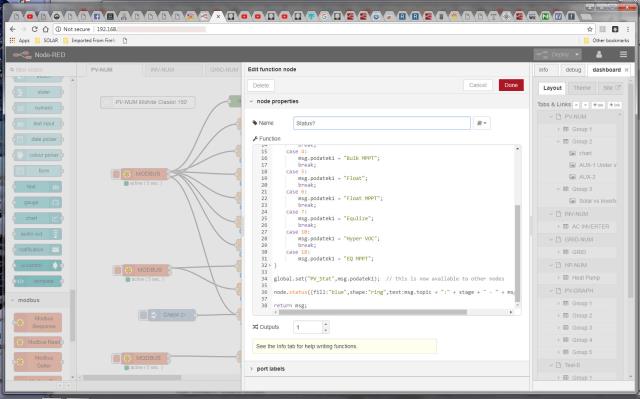 Numerical data from Classic 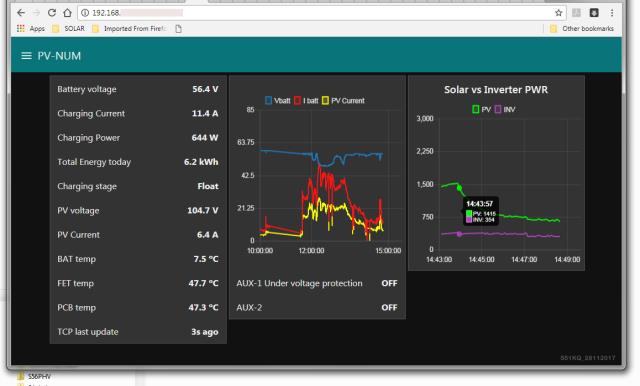 Available "devices" 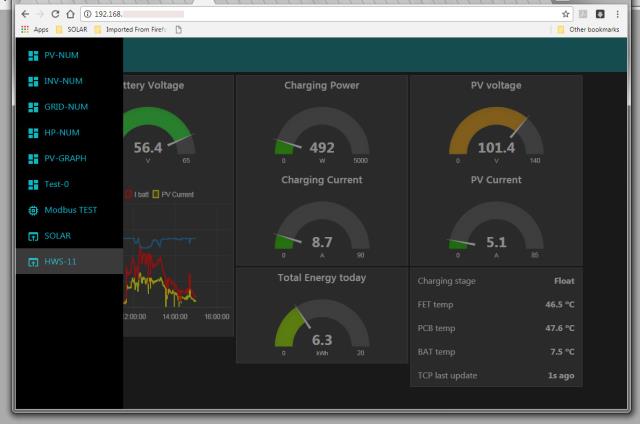 Complete remote control for Heat pump (integrated web server) 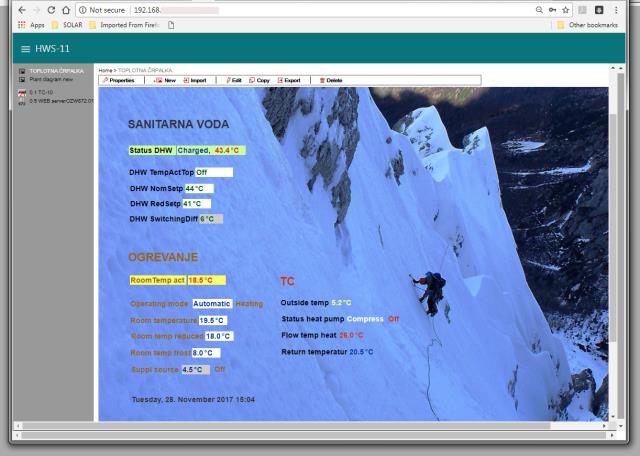 Metereing on 8kW DC/AC LF Inverter 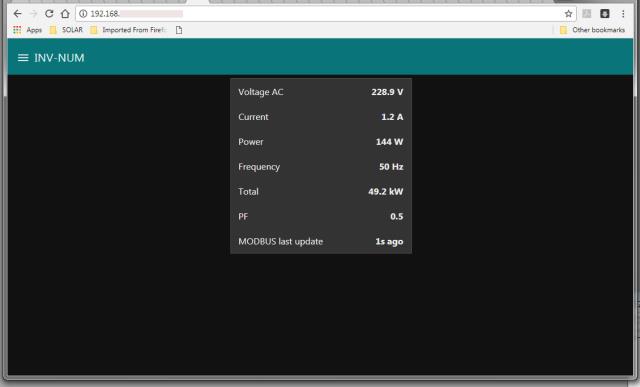 Solar water heating server integrated in to RPi 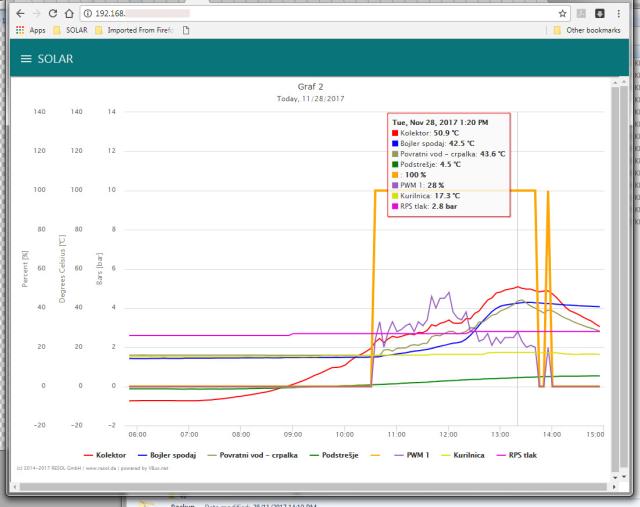 OffGrid 24/7: 250w black mono solar panels 6.4kWp, 1x Midnite Classic 150, 1x MorningStar MPPT 60, battery bank 840 Ah @ 48v, modified LF-8K inverter, DC/DC, hot water harvesting, etc. |
||||
Madness Guru Joined: 08/10/2011 Location: AustraliaPosts: 2498 |
There are lots of people on the Midnite forum that have set up communication with the Classic, would be worth looking there if you have not already. There are only 10 types of people in the world: those who understand binary, and those who don't. |
||||